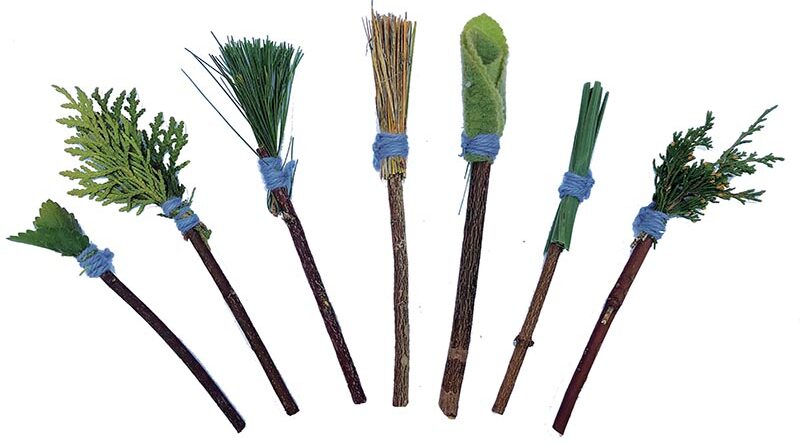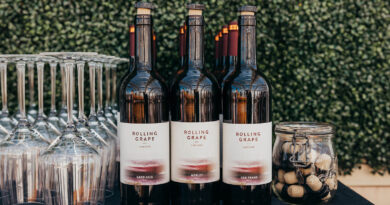A Brush with Nature
Nature is full of complex curves, shapes and lines. Even the tiniest leaf has sweeping edges, an intricate veining pattern and a surprising variation in colour. Sometimes by drawing and painting nature, we come to appreciate it in a whole different way. We notice details that we might otherwise miss. The incredible hues of green in a forest, how the foreground tends to be darker, and the background recedes in ever lightening tones.
Here is a way that you can draw nature using completely natural ink and paintbrushes, using materials you’ve gathered in a nearby field or forest.
Making Natural Paint brushes:
Gather sticks that are about 6 inches long and ½ inch wide. Using scissors, gently harvest a clump of soft grass, a bundle of pine needles, a sprig of cedar, the tip of a mullein leaf, the ends of dandelion leaves – really anything that is soft and pliable. Using woollen yarn, thread or wire, tie the tips of your paint brush to the shaft of your sticks. Now all you need is some natural ink.
Here is how to make simple berry ink:
Gather ripe berries such as raspberries, strawberries and blackberries. I’ve had great success with Buckthorn berries. In a pinch, frozen berries will work as well.
Crush your berries until you have a fine pulp. Add a teaspoon of white vinegar and a dash of salt per pint of crushed berries. The salt and vinegar acts like a mordant, fixing the colour of the ink. Simmer on a stove on low for about 1 hour. Dip a small piece of paper and observe the colour. If you want it darker, simmer some more. Watch that your cooking berries don’t dry out. Add water if necessary. Pour through a strainer or better yet, a coffee filter. Use the back of a fork to press your ink through the strainer. Pour into a small glass jar. Consider adding a whole clove of and/or a drop of wintergreen oil before closing the lid. Do add a label and clearly mark with this is. You don’t want someone accidentally drinking your concoction!
Experiment with other types of plants. Try leaves, nuts roots and flowers. Crush using a mortar and pestle. Add 1 cup of plant parts to 2 cups water. Remember to add a dash of salt and 1 teaspoon of white vinegar. Simmer for an hour or more, checking for colour change.
You are ready to use this. Apply to regular paper or watercolour paper using regular brushes or your own homemade nature paint brushes. Remember this – your ink will change colour in time, fading in sunlight or darkening, depending on the material you’ve used. Have a berry nice time!
Submitted by Jacob Rodenburg, Executive Director of Camp Kawartha, an award-winning outdoor education centre and summer camp.




